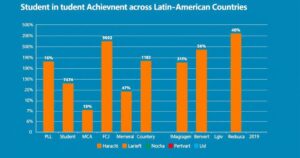Seismic Activity Overview: Recent Earthquakes in Chile and Beyond

On January 2, 2020, a 6.1-magnitude earthquake struck near Calama, Chile, following various seismic events in California and Alaska over the past week. Key updates include a 4.7-magnitude quake in Cobb, California, and others in Nikolski, Alaska, and the Kuril Islands, illustrating a pattern of significant geological activity across these regions.
On January 2, a significant 6.1-magnitude earthquake struck near Calama, Chile, as reported by the United States Geological Survey (USGS). The earthquake occurred at a considerable depth of 99 kilometers (approximately 61.5 miles), and the USGS indicated that they received 25 reports from individuals who felt the tremor.
This seismic event followed a 4.7-magnitude earthquake in Cobb, California, on January 1, which was notably shallow at a depth of 1.1 kilometers (about 0.7 miles). Just days prior, a 3.3-magnitude earthquake was registered in Nikolski, Alaska, on December 30, originating 39.5 kilometers (about 25 miles) underground.
Additionally, on the same day as the Cobb incident, another 3.3-magnitude earthquake was reported in Fort Bidwell, California, at a depth of 3.4 kilometers (about 2.1 miles). Just prior, on December 27, a more powerful 6.7-magnitude earthquake occurred in the Kuril Islands at a considerable depth of 162.6 kilometers (approximately 101 miles).
The Kuril Islands earthquake was preceded by a 3.6-magnitude quake in McCarthy, Alaska, on December 26, which was situated at a depth of 8.1 kilometers (about five miles). Furthermore, this series of seismic activities began with a 3.0-magnitude earthquake in Clayton, California, on December 25, documented at a depth of 13.2 kilometers (about 8.2 miles). Lastly, the timeline of earthquakes extended back to December 23, when a 5.9-magnitude quake was recorded in Guisa, Cuba, at a depth of 22.2 kilometers (approximately 13.8 miles).
Earthquakes are a common natural phenomenon, particularly in regions located along tectonic plate boundaries. In the case of the recent earthquakes, the activities span various locations including Chile, California, Alaska, and Cuba. The USGS provides essential monitoring and public reports of seismic events, which serve to keep communities informed and prepared for such occurrences. Understanding the depth and magnitude of earthquakes is critical for assessing potential impact, safety measures, and emergency responses.
In summary, the series of earthquakes documented across different regions highlights the ongoing seismic activity in various tectonic zones. From the notable 6.1-magnitude quake in Chile to the subsequent tremors in California and Alaska, each event requires careful analysis and awareness to mitigate risks associated with such natural disasters. Continued vigilance and preparedness are vital in regions affected by frequent seismic activity.
Original Source: kube933.iheart.com





